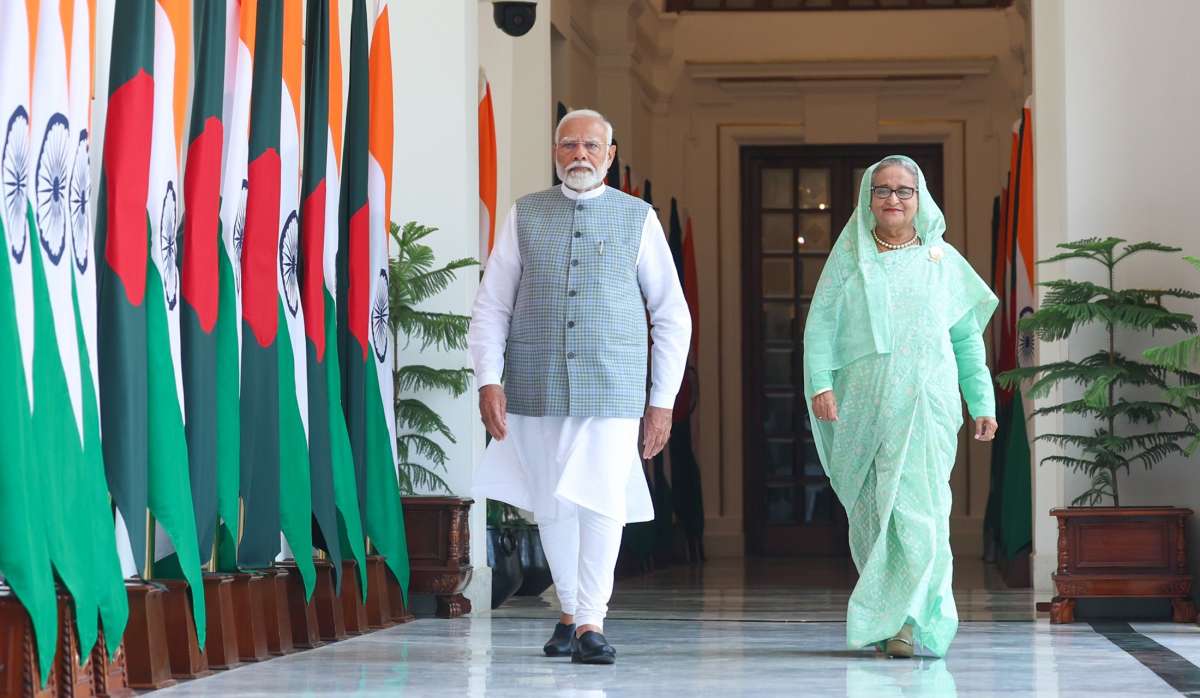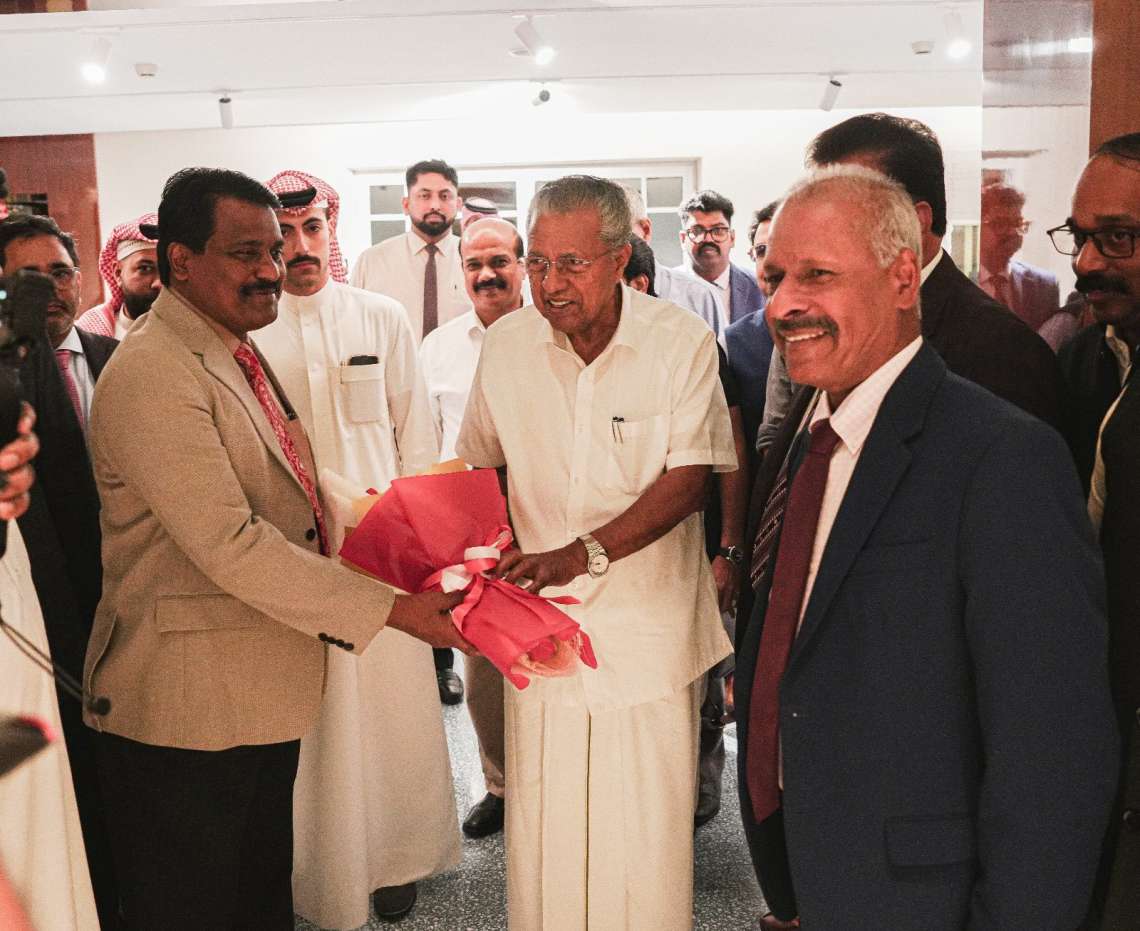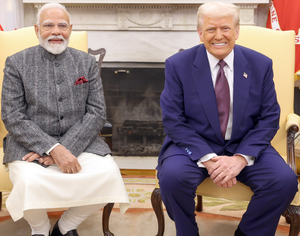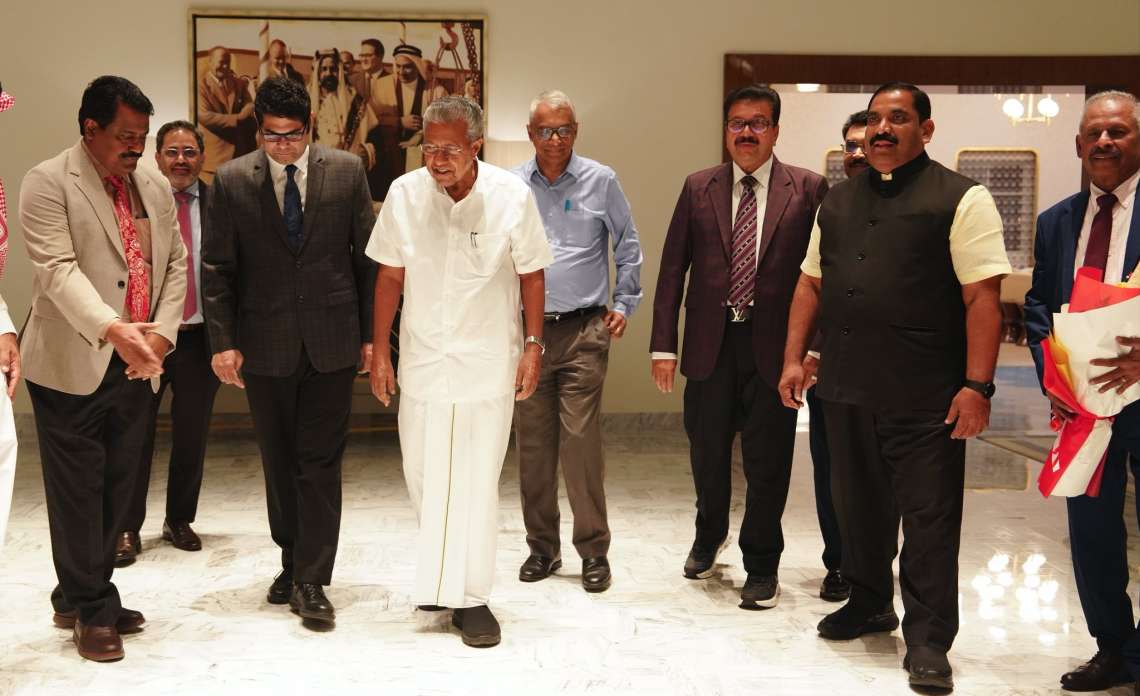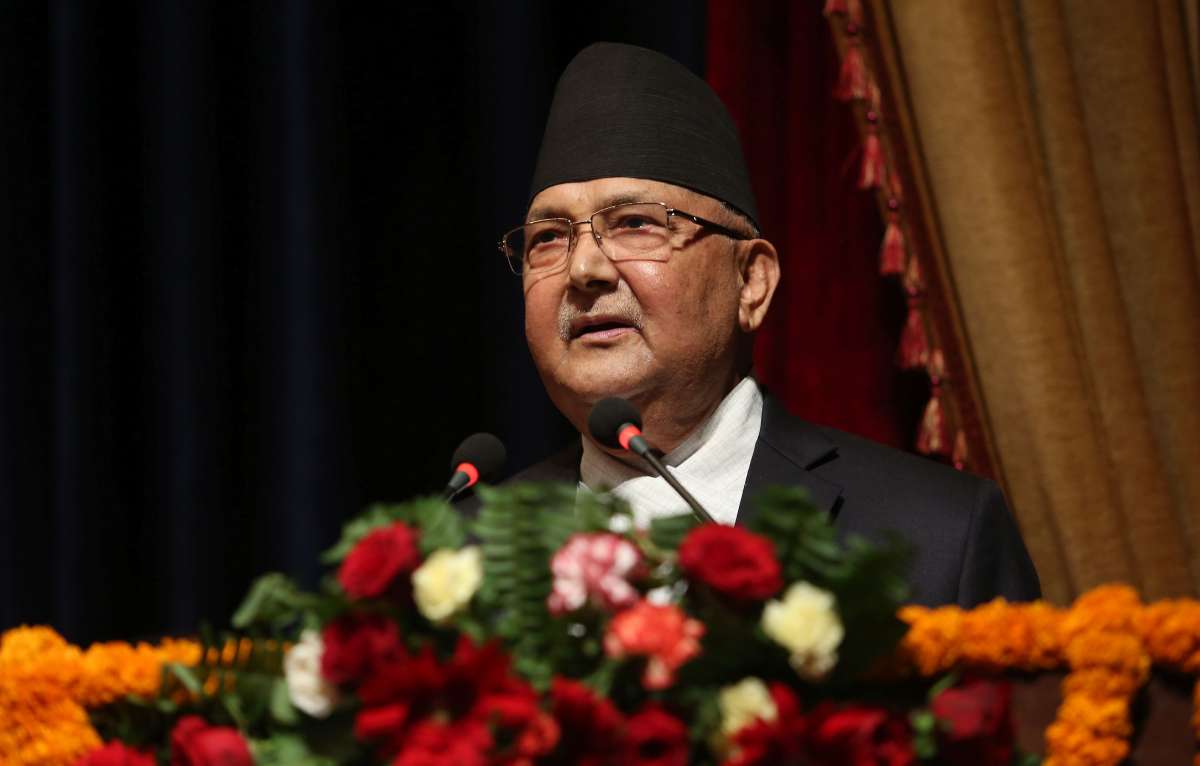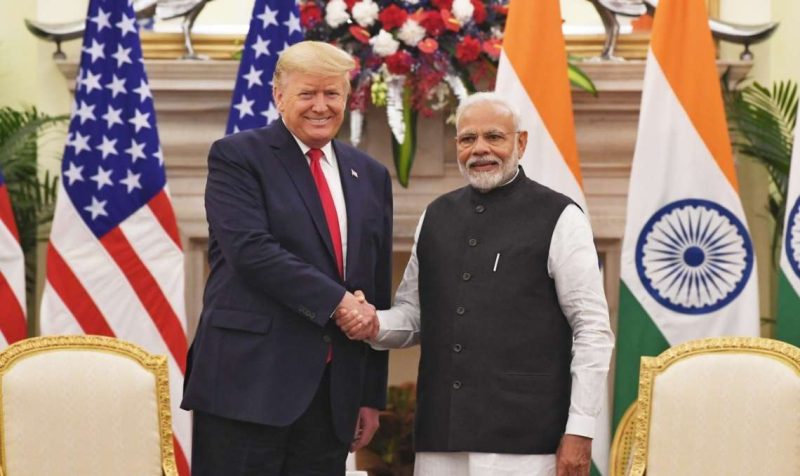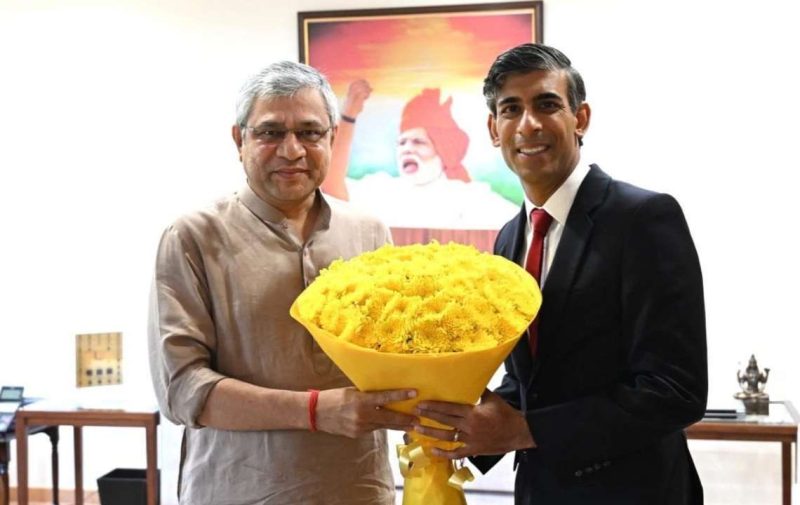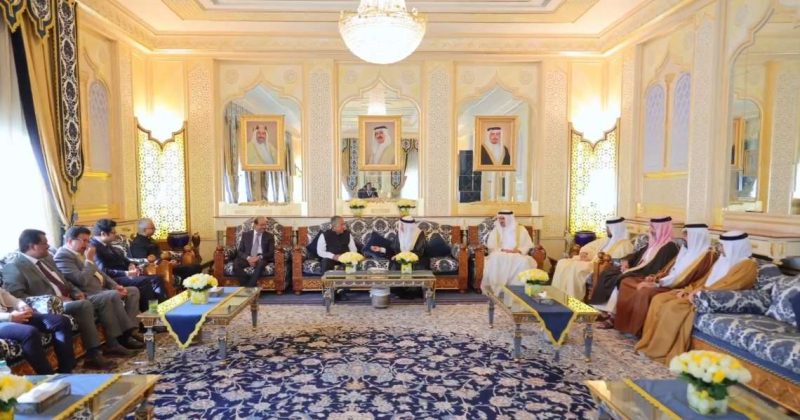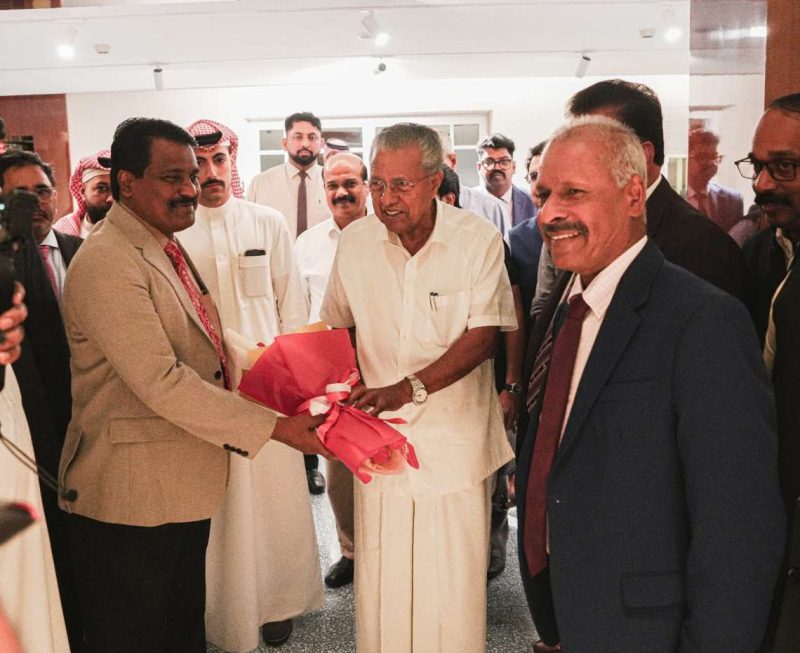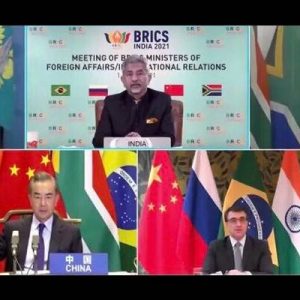Bangladesh holds a key position in India’s neighbourhood policy, given the deep historical, linguistic, cultural, political, and economic linkages between the two countries, writes Nihar R Nayak
The upward trajectory in India-Bangladesh bilateral relations continued with the official visit of Sheikh Hasina, Prime Minister of Bangladesh, to India on June 21-22, 2024. This visit occurred as both leaders had recently returned to power with fresh mandates and vowed to consolidate the relationship into a ‘transformational partnership’ over the next five years.
This was Hasina’s second visit to India since assuming office in Dhaka in January 2024. Just a fortnight before, she attended the oath-taking ceremony of Indian Prime Minister Narendra Modi on June 9, 2024.
The importance of Bangladesh in India’s neighbourhood policy is underscored by the fact that, while other South Asian and Indian Ocean Region leaders invited PM Modi to visit their respective countries, India extended an invitation to Bangladesh’s PM to visit as the first state guest after the formation of the Modi 3.0 government in New Delhi.
Notably, this visit marked a departure from the pattern established in Modi’s previous two terms, where his first bilateral visits were to Nepal in 2014 and The Maldives and Sri Lanka in 2019.
This shift highlights the emphasis on India’s ‘Neighbourhood First’ policy with a focus on deepening ties with Bangladesh.

Historical context of bilateral relationship
Bangladesh holds a key position in India’s neighbourhood policy, given the deep historical, linguistic, cultural, political, and economic linkages between the two countries.
Speaking on the occasion of their joint statement, PM Modi said, “Bangladesh is situated at the confluence of our Neighbourhood First Policy, Act East Policy, Vision Sagar, and Indo-Pacific Vision.”
Expressing the mutual importance of the relationship, PM Hasina stated, “India is our major neighbour, trusted friend, and regional partner. Bangladesh greatly values our relations with India, which were born during our war of liberation in 1971. I pay homage to the brave, fallen heroes of India who sacrificed their lives during our war of liberation in 1971.”
Over the past decade, this partnership has strengthened, matured, and proven to be a dependable bilateral relationship, serving as a model for other bilateral relationships in the region.
Bangladesh is India’s largest development partner, having received four Lines of Credit (LoCs) from India in the last eight years, amounting to around US$8 billion. In addition to LoCs, India provides grant assistance to Bangladesh for various infrastructure projects.
Economically, India is the second-largest trade partner of Bangladesh, with an annual trade volume exceeding US$15 billion.
India is also the largest investor in Bangladesh’s power and energy sector. Additionally, after Nepal, Bangladesh became the second SAARC country with an oil pipeline connection from India.

Significance of visit
The visit held immense strategic value, especially as extra-regional powers, particularly China, have been attempting to penetrate India’s sphere of influence. The visit conveyed three strong messages.
First, it underscored India’s central role in South Asian geopolitics, given its geo-cultural advantages in the region. This is evident in the norm of new governments in the region often undertaking their first official overseas visit to India and vice versa. Politically, India is the preferred partner for its neighbours.
Second, the timing of the visit, less than a month before PM Hasina’s scheduled visit to China, was significant. China aimed to finalise a water conservation project over the Teesta River.
While China has completed a physical survey of the project, India expressed its willingness to conduct another study regarding the implementation of the Teesta project. This issue was discussed during Hasina’s visit to India, where India is presumed to have reservations about China’s involvement in major projects on the Teesta River.
In an interview following her visit, PM Hasina stated, “Bangladesh has a longstanding issue over Teesta River water sharing with India. So, it will be easy for Bangladesh if India does the Teesta project. In that case, we won’t need to talk about the Teesta water sharing always.”
Third, the visit reaffirmed the strong political and strategic ties between India and Bangladesh, demonstrating that despite external influences, the bilateral relationship remains a priority for both nations.
Visit outcomes
The visit was highly productive and resulted in a win-win situation for both countries, marked by the signing of 10 MoUs and 13 announcements covering a wide range of issues related to connectivity, economy, energy, disaster management, and defence cooperation.
For the first time, both countries issued a vision statement instead of a routine joint statement. The two leaders jointly articulated their shared vision for peace, prosperity, and development of the two neighbours and the entire region, driven by connectivity, commerce, and collaboration.
With a vision to pursue a transformative partnership, both countries committed to enhancing physical connectivity, covering multi-modal transport and cross-border trade and transit infrastructure for seamless movement of people, goods, and services.
This includes energy and digital connectivity. In this context, the BBIN Motor Vehicle Agreement is seen as an asset in accelerating regional growth. For the first time, intra-regional energy trade was mentioned in the vision statement.
Moreover, both leaders foresee the pivotal role of emerging technology in bringing greater benefits to the people of both countries. They agreed on partnerships through a “Shared Vision for India-Bangladesh Digital Partnership” and a “Shared Vision for India-Bangladesh Green Partnership for a Sustainable Future,” aligned with India’s “Viksit Bharat 2047” and Bangladesh’s “Smart Bangladesh Vision 2041.”
Underscoring the significant role of the two countries in ensuring peace, stability, and harmony in the region, the visit also gave a big push for the modernisation of the Bangladesh Armed Forces and defence industrial cooperation to strengthen their defence capabilities.
Additionally, Bangladesh announced its participation in the Indo-Pacific Oceans Initiative as a collaborative partner of India, aiming for peace, stability, and security in the region. Both countries reiterated their commitment to a free, open, inclusive, secure, and rules-based Indo-Pacific region.
Since visa issues have been a major irritant in the bilateral relationship and a critical means of people-to-people connectivity, India announced the extension of e-Medical visa facilities to Bangladeshis traveling to India for medical treatment.
India also announced the opening of a new Assistant High Commission office in Rangpur to facilitate consular and visa services for the people of the northwest region of Bangladesh.

Conclusion
The visit was a blend of commitments for future-oriented partnerships and a clear message to other countries that India and Bangladesh prioritise each other in terms of development, security, and regional issues.
From India’s perspective, the visit aimed to address Bangladesh’s developmental aspirations while limiting the influence of extra-regional powers that could create misunderstandings in bilateral relations. Concurrently, Bangladesh demonstrated its consideration for India’s strategic sensitivities by cautiously engaging with other countries in development assistance.
The continued recognition of each other’s sensitivities is crucial for the future of the bilateral relationship. This visit underscored the mutual commitment to strengthening ties and working together for shared prosperity and regional stability.
(The writer is a Research Fellow at MP-IDSA; views expressed in this article are personal) – India News Network
ALSO READ: India’s GRSE to build advanced tug for Bangladesh Navy


